
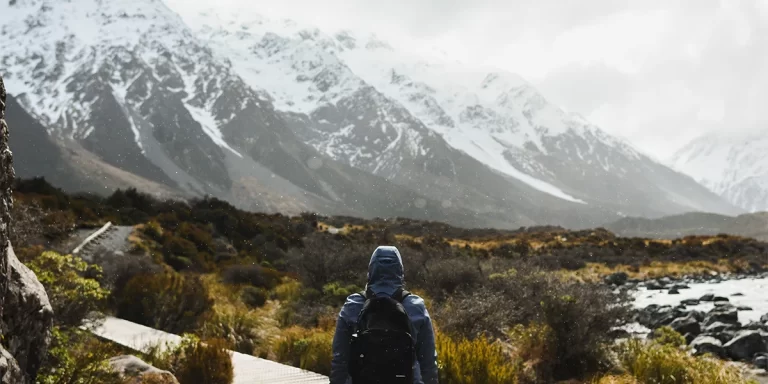
Backpacking in New Zealand offers outdoor enthusiasts a breathtaking array of landscapes, from the towering peaks of the Southern Alps to the pristine beaches and fjords of the coast, including iconic destinations like the Milford Track and Tongariro Alpine Crossing.
And that’s what this post is all about – backpacking in New Zealand. We’ll provide tips to help you prepare for backpacking in this diverse country as well as showcase the best multi-day trails in New Zealand’s stunning natural scenery.
Intrigued? Let’s get started.
Discover the most stunning long trails in New Zealand for incredible backpacking adventures:
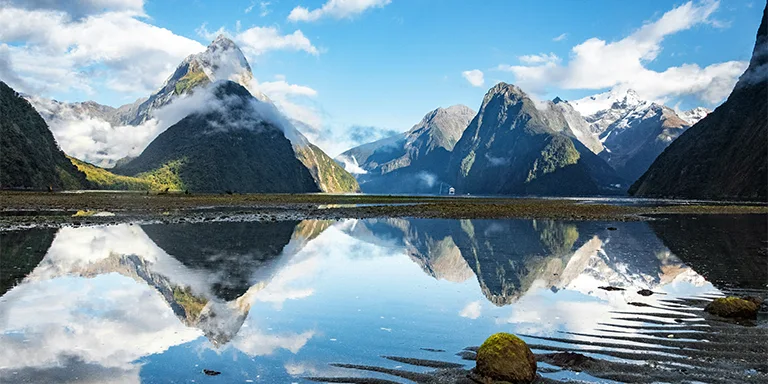
Length: 33.9 mi / 54.5 km
Type: Point to point
Difficulty: Hard
Elevation Gain: 6430 ft / 1960 m
Location: Fiordland National Park
Estimated Hiking Calorie Burn: 7300 calories
More Details: See on AllTrails
Hike the tough 33.9-mile Milford Track in New Zealand. This famous trail goes through ancient glacial landscapes, thundering waterfalls, and rainforests in Fiordland National Park. The best time is from October to April. You’ll stay in three huts along the way since camping isn’t allowed. Be ready for possible floods, avalanches, and fast weather changes as you follow in the footsteps of early explorers. It’s a demanding multi-day challenge for experienced backpackers.
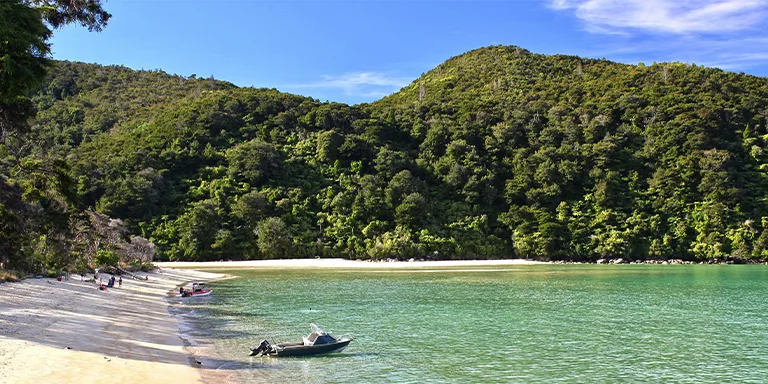
Length: 37.4 mi / 60.2 km
Type: Point to point
Difficulty: Hard
Elevation Gain: 6515 ft / 1986 m
Location: Abel Tasman National Park
Estimated Hiking Calorie Burn: 9100 calories
More Details: See on AllTrails
Tackle the 37.4-mile Abel Tasman Coast Track, a challenging trail along New Zealand’s golden beaches and coastal scenery in Nelson-Tasman. Stay at designated campsites or huts with basic facilities. Check tide times for beach sections. Though no big peaks, the constant elevation changes make it demanding with a backpack. A popular but strenuous multi-day trek rewarded by stunning ocean views year-round.
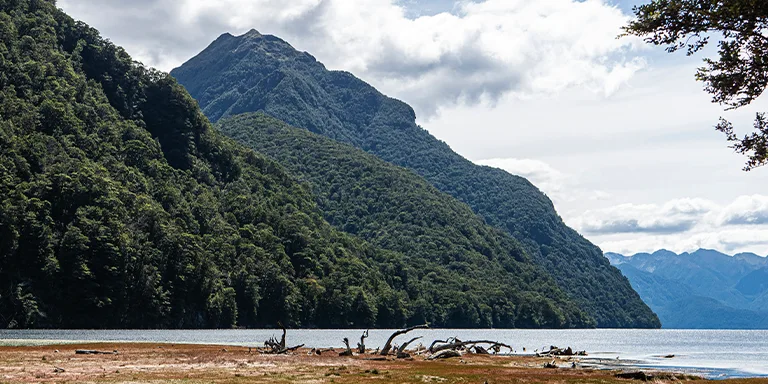
Length: 36.4 mi / 58.6 km
Type: Loop
Difficulty: Hard
Elevation Gain: 6955 ft / 2120 m
Location: Fiordland National Park
Estimated Hiking Calorie Burn: 9300 calories
More Details: See on AllTrails
Hike the challenging 36.4-mile Kepler Track loop in New Zealand’s Fiordland National Park near Te Anau. This very popular Great Walk is best from October-May. Expect alpine views, lake beaches, steep rocky sections and quickly changing mountain weather. Be prepared for potential snow, ice and avalanche dangers. Stay at serviced huts or designated campsites with facilities during the main season (bookings required). Check conditions before your multi-day trek through breathtaking but hazardous wilderness. Parts can be muddy with sandfly swarms – plan campsites carefully.
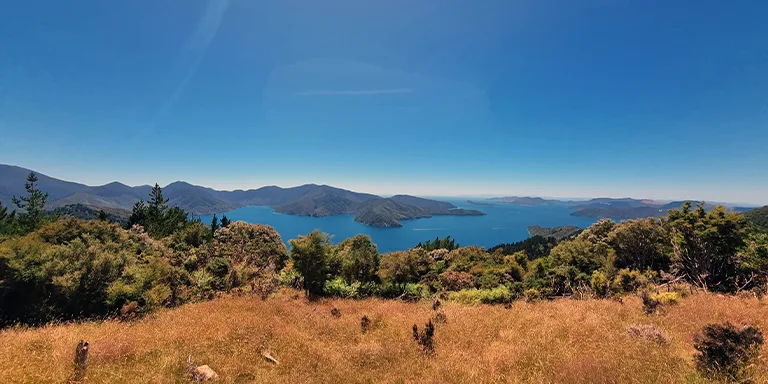
Length: 45 mi / 72.4 km
Type: Point to point
Difficulty: Hard
Elevation Gain: 9022 ft / 2750 m
Location: Picton
Estimated Hiking Calorie Burn: 11 700 calories
More Details: See on AllTrails
Tackle the challenging 45-mile Queen Charlotte Track through New Zealand’s scenic Marlborough Sounds region. This popular point-to-point trail runs from historic Ship Cove to Anakiwa along serene coastal landscapes. Plan on 3-4 demanding days with tiring uphills, especially at the end. Proper gear advised, but you’ll be rewarded with stunning waterway views and potential wildlife sightings on this multi-day adventure.
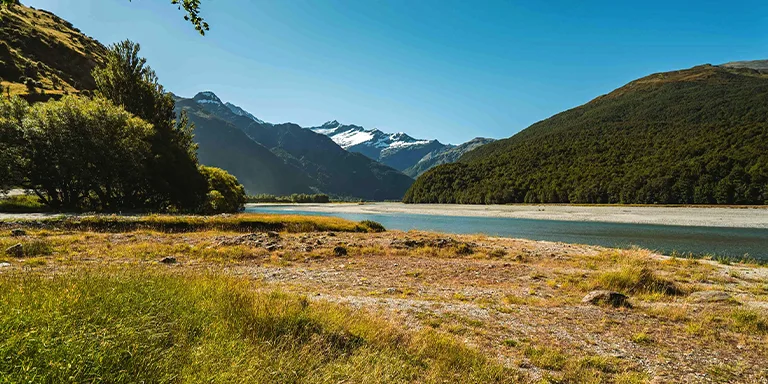
Length: 34.3 mi / 55.2 km
Type: Loop
Difficulty: Hard
Elevation Gain: 7480 ft / 2280 m
Location: Mount Aspiring National Park
Estimated Hiking Calorie Burn: 9400 calories
More Details: See on AllTrails
Test your backcountry skills on the demanding 34.3-mile Gillespie Pass Circuit loop in Mount Aspiring National Park. This strenuous multi-day trek through remote wilderness features treacherous river crossings, steep sections and unstable terrain, but incredible mountain scenery payoff for experienced hikers. Huts available.
New Zealand experiences a varied climate, and the weather can differ significantly depending on the season and region. In general:
Prior to choosing your gear, review the weather data for New Zealand (Queenstown):
| Jan | Feb | Mar | Apr | May | Jun | Jul | Aug | Sep | Oct | Nov | Dec | |
|---|---|---|---|---|---|---|---|---|---|---|---|---|
| High °F | 72 | 72 | 68 | 61 | 54 | 46 | 46 | 50 | 55 | 61 | 64 | 70 |
| Low °F | 50 | 50 | 48 | 43 | 37 | 32 | 32 | 34 | 37 | 43 | 45 | 48 |
| Rainy days | 13 | 13 | 15 | 16 | 17 | 16 | 15 | 15 | 17 | 19 | 16 | 17 |
Not sure if Washington is right for you?
Don’t forget to check out our backpacking guide for Australia.
When backpacking in New Zealand, building campfires requires planning due to fire risk. Fires are only allowed in existing fire pits at designated campgrounds, and never during total fire bans which are common during dry summer months. Use only dead fallen wood and fully contain the fire. Completely douse all embers, ashes, and sticks with water until cold to the touch before departing. Exercise great caution, as wildfires can spread rapidly in New Zealand’s forests and pastures. With responsible practices like approved fire sites, proper materials, total control and extinguishment, campers can still enjoy this classic activity.
When exploring New Zealand’s backcountry, plan your route carefully and register your plans to stay safe. Carry sufficient supplies, tell others where you are going, and be prepared for rapidly changing mountain weather. Avoid avalanche-prone areas in winter. Swim only at patrolled beaches to stay clear of rips and sharks. Keep away from cliff edges and fast flowing rivers. Watch for falling rocks in alpine areas. Stay on marked tracks as landslides are possible. Don’t disturb farm animals and avoid poisonous plants. Beware of hypothermia in cold mountain conditions. Following these tips will allow you to safely enjoy New Zealand’s scenic hiking trails and natural beauty. Registering your intentions, packing properly, and respecting the environment are keys to safe backcountry travel in New Zealand.
When hiking in New Zealand, be aware of your surroundings and make noise to avoid surprising wildlife. Give seals, kea parrots, and other animals plenty of space. Do not approach or attempt to touch or feed wild animals. Wear insect repellent and check for ticks after hiking to prevent disease. Watch for wētā insects around huts and campsites. Carry antihistamines if you have allergies to beestings. Back away carefully if you encounter aggressive wildlife like wild boar or stags during mating season. Avoid areas with poisonous spiders and plants like the katipo. Promptly seek medical attention for any bites or stings. Staying alert, keeping your distance, and respecting wildlife is the best approach for safe encounters while trekking in New Zealand’s beautiful wilderness.
No, U.S. citizens do not need a visa to visit New Zealand for tourism or business purposes for stays of up to 90 days. However, they do need to obtain an Electronic Travel Authority (ETA) prior to their travel. The ETA can be requested online.